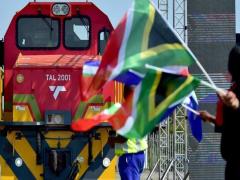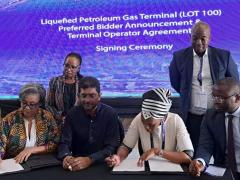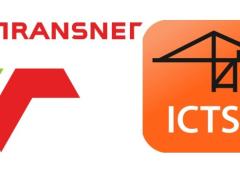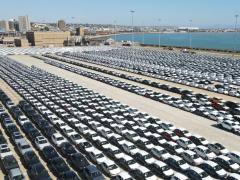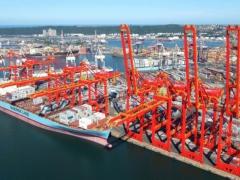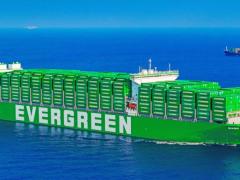South Africa’s border crossing for in-transit cargo heading to the Copperbelt is again experiencing heavy congestion outside the control zone area on the N11 at Groblersbrug, with reports coming through of Hazchem trucks taking four days to cross.
Apparently, a spike in demand for acid at mines in the Democratic Republic of the Congo (DRC) and Zambia has resulted in an increase of dangerous cargo hauliers heading to the border.
An operator carrying fuel to the Copperbelt said trucks he sent to the border on Friday only managed to cross into Botswana on Monday, September 15.
He said the problem wasn’t so much inside the border control zone itself, as the authorized economic operator (AEO) programme by the SA Revenue Service seemed to be doing well.
“Once we’re inside the border we manage to get through relatively quickly. The problem is getting inside the gate as no one appears to be taking responsibility for controlling the queue,” said the operator whose name is withheld.
This has been confirmed by Mike Fitzmaurice, chief executive of the Transit Assistance Bureau (Transist).
He said the border was again showing that it didn’t have capacity to cope with sudden spikes in truck traffic, which has become the norm because of cross-border transporters preferring to avoid the North-South route through Zimbabwe.
Fitzmaurice said trucks carrying general cargo, refrigerated goods, break bulk and Hazchem, all heading to the Copperbelt, were arriving at the border at a rate exceeding the capacity of authorities to control the queue.
The operator said his drivers were waiting in a five-kilometre queue at one stage.
Another operator whose name is also withheld, apparently moved only about 700 metres on Monday.
Not for the first time, transporters are saying that Hazchem carriers and trucks with pre-cleared cargo are not receiving preference for complying with cargo protocols aimed at avoiding border congestion.
Those who don’t adhere to pre-clearing measures proceed to the border anyway in the hope of bribing their way through.
Because of the amount of traffic authorities suddenly have to cope with, trucks are being pushed into parks, of which there are only two – and they are filled to capacity.
Amid the chaos caused by the lack of proper queue control, some drivers have taken it upon themselves to ‘control’ traffic in the absence of law enforcers, while tempers flare.
On Monday, Transist was sent video footage of marshals wearing chevron bibs arguing with officials from the Cross-Border Road Traffic Management Agency (CBRTA).
Fitmzaurice, who also serves as sub-Saharan vice president of the Union Africaine des Organisations des Transports et de la Logistique, said the marshals had no jurisdiction over what happened in the queue.
“It’s up to traffic officials but we’re not seeing that. What we’re seeing are some drivers taking control of the situation, most likely to exploit it.”
An official from the Border Management Authority (BMA) has told Transist that they can’t control what happens at privately owned trucks parks, where the marshals seemed to have taken control, randomly selecting who gets to go to the border and who not.
The same official also said: “Our agreement with all stakeholders is to prioritize (the) clearance (of) dangerous goods.”
But this isn’t necessarily the case, as Hazchem cargo carriers, especially those with pre-cleared loads, are receiving the same treatment as all other trucks – being directed to overfull truck parks along with all other types of cargo.
The official said there was nothing they could do about a truck park with private security, despite the BMA’s mandate that states that it’s lawfully responsible for a 10km radius at all South Africa’s land borders.
The official also said: “Our traffic and CBRTA officials are responsible to ensure that there's compliance on N11 road. They're on the ground working very hard.”
Footage seen by Freight News suggests the opposite, with marshals and CBRTA officials at odds with one another about the situation on the ground.
One of the Hazchem carriers said, because of the risk at Groblersbrug, they were currently not sending any fuel to the Copperbelt.
“It’s not safe. We can’t risk waiting on the side of the road, and the truck parks aren’t properly run. They should really be prioritizing dangerous cargo as they say they are, and given proceed-to-border preference for tankers carrying loads such as fuel and acid.
“Instead, we have random drivers trying to control the queue and making matters worse because they don’t know what they’re doing.”
Fitzmaurice said: “This really shouldn’t be happening but it’s also not the first time we’ve seen this at Groblersbrug. Whenever volumes increase, government authorities responsible for managing situations such as this lose the ability to do so.”
Operators are also refusing to consider going through Zim.
“We have to pay US$426 to Zimborders at Beitbridge,” one of the Hazchem carriers said.
“It adds significant expense to a round trip to the Copperbelt and back. We already have toll fees in Zambia to pay. Zimbabwe is simply not cost effective, and the roads are bad.”
Fitzmaurice confirmed that this was a prevailing sentiment among many Hazchem carriers, who might soon not have to pay an in-transit fee on top of the Beitbridge toll charged by Zimborders.
One of the transporters said he still would not drive through Zim.
Fitzmaurice said another impediment was the dipping at Chirundu on Zim’s border with Zambia, to prevent smuggling, where tankers were tested to see if they were still carrying fuel and not water.
The practice has become a major hold-up for in-transit tankers, even though many Hazchem carriers can prove the integrity of their loads through GPS seals.
Moreover, Zimbabwe’s authorities did not have the means to conduct proper dip-testing at Chirundu, Fitzmaurice said.
Preferring to avoid Zim altogether, cross-border carriers serving the line between South Africa and the Copperbelt are using one route – the way through Botswana and southern Zambia where Groblersbrug has become prone to congestion.
BMA deputy assistant commissioner Mmemme Mogotsi was approached for comment but said she was in a meeting.
She replied to a list of questions sent to her saying: “I will revert.”
The CBRTA’s acting communications manager, Kago Ramoroka, was also approached for comment but didn’t respond.
On Tuesday morning Fitzmaurice said: “The border remains congested, and it doesn’t seem like either the BMA or the CBRTA know what to do, when it’s quite simple.
“Trucks with uncleared cargo should not be allowed to proceed to the border. Those with pre-cleared loads should be pulled out of the parks and allowed to proceed to the border.”
He said truck-staging areas well away from the N11 at the border could be used to separate compliant operators from those that go to the border without pre-cleared cargo.


